If you’ve been listening to nature podcasts or reading about nature and health, maybe you’ve heard about the sit spot. This easy nature activity is quickly gaining popularity among nature lovers and wellness practitioners. Furthermore, according to many of my mentors, sit spots are a key skill for Beginner Naturalists.
In this Outdoor Tips post, I’ll explain how sit spots work and highlight their major benefits. In particular, I’ll outline why you should make them a key part of your outdoor experiences.
Sit spots: slowing your roll
So, what is a sit spot? A sit spot is the practice of sitting still and quietly outdoors to observe and better connect with the natural world. Some people also use the term to describe a specific place where they like to sit and observe. Because of this, it makes sense to consider two types of sit spots:
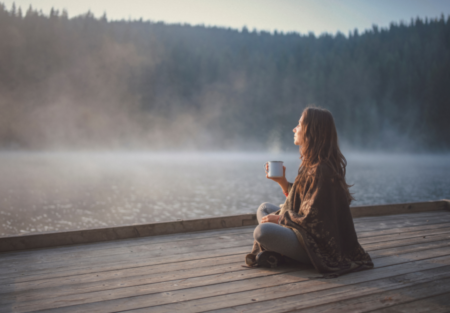
- Fixed sit spots: Specific places that you visit repeatedly over time to get a sense of place.
- Free sit spots: Any outdoor space where you choose to sit and passively observe for a while during an outdoor experience.
Regardless of the type of sit spot you do, the major point is passive observation. In other words, you want to take in what’s around you rather than interact with it. Sit spots are not so much about doing as they are about witnessing, and learning. Thus, their focus is about slowing down for a moment and embracing a different pace in nature.
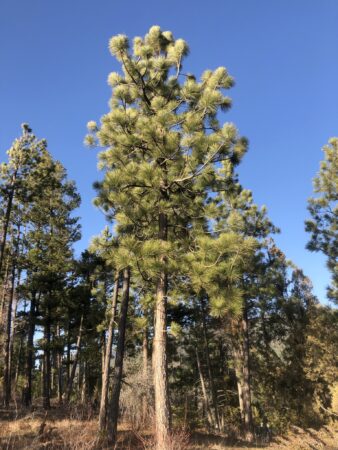
If you think about it, this is a major contrast compared to how many people, even naturalists, spend time outside. Mountain-biking, backpacking, birdwatching, even admiring wildflowers still involves moving around and with a purpose. Instead, sit spots are about staying put and letting nature come to you. Because of this, they are a very different way of connecting with the natural world.
Why would you want to do a sit spot?
Sitting around outside sounds nice and all, but what is all the fuss about? Why do so many naturalists and ecotherapy people think it’s the cats meow?
Noticing new things
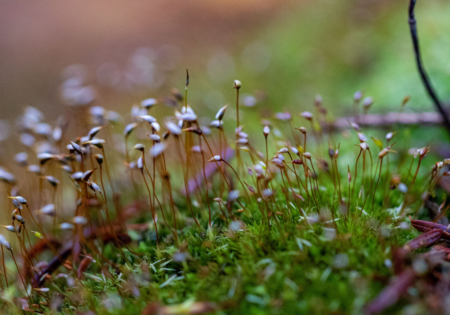
Perhaps the biggest benefit of the sit spot is discovering things that we normally overlook. Nature is filled with tiny wonders, from bugs to mosses and lichens that we normally overlook. By standing still, we can notice things in nature that we miss in our everyday hustle and bustle.
For example, we might hear the trickle of a groundwater seep feeding a tiny stream. Alternatively, you could spot a springtail making its way through the leaf litter. When we stop for a while, all of our senses can come into play. It becomes possible to perceive and connect with a space in a deeper and more meaningful way.
Spotting critters

Moving quickly through outdoor spaces does two things to animals:
- It frightens them with rapid motion and often noise.
- They grow accustomed to people as moving, nonstationary objects that don’t stick around long.
Either way, this means that you’re less likely to see critters. On one hand, they will hide when you pass by, and are unlikely to emerge again for some time. On the other hand, other animals may not approach or take interest in you because they’re used to people just passing through.
By standing still and staying quiet in nature, you change both of these problems. First, wildlife will forget you’re around, or grow accustomed to your presence. As long as you don’t make any noise and don’t make sudden movements, they will become less cautious. Secondly, others may take an interest in you as a strange object. To them, humans are always blustering through. They may be curious about one that stands still.
For instance, I once sat for a couple hours near a swamp in the Bahamas to see what animals came to drink. After about forty-five minutes, a handful of curious birds surrounded me and some approached very closely. Such harmless and enchanting encounters are only possible through the stillness of a sit spot.
Of course, it’s worth emphasizing that being approached by wildlife is not always a good thing. If you are in areas frequented by large predators like bears or cats, it is worth being watchful of your surroundings. Bearspray or other defensive equipment is definitely a good idea in such cases!
Learning the seasons

If you’re into fixed sit spots, then you’ll be visiting one place over and over. Even if its only once a month, you’ll gradually get a sense of how that place changes. Eventually, you may begin to perceive particular rhythms. What time do the first leaves come out, or the first fruit on the trees? In tropical environments, how do disturbances like storms or treefalls change the space?
All of this can give you a profound sense of the timing in nature, what scientists call phenology. In other words, the predictable changes that happen in outdoor spaces. Learning these can really enrich your experiences outside and help you plan nature travel!
Reducing stress
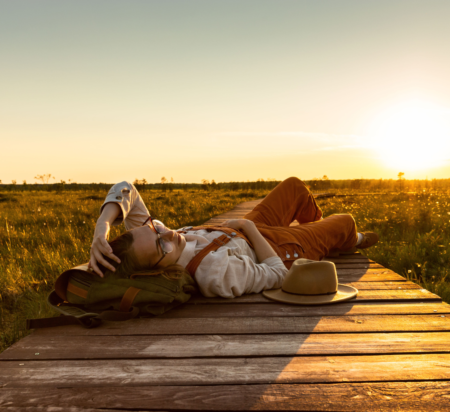
A growing body of scientific literature suggests that spending time outside reduces stress. By spending mindful time in nature with a sit spot, you can really reap this and other health benefits. The more often you take a sit spot, or visit a fixed location, the more you can benefit. This is a fantastic and relatively affordable cure to the hectic pace of modern life.
Gaining a sense of place
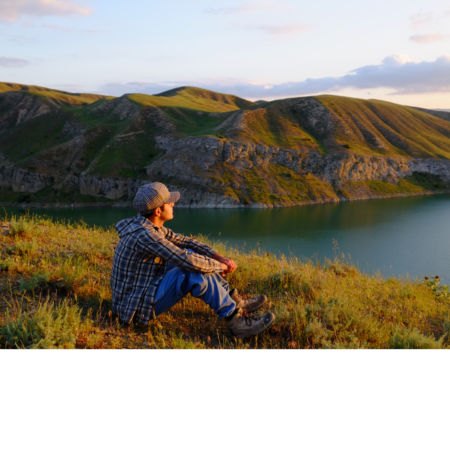
Sit spots are my favorite way to “learn” the nature of a place. Whether it’s getting to know local birds or the lay of the landscape, sit spots can tell you a lot. This goes for natural places I visit in my own travels, as well as my everyday neighborhood. For instance, I often do sit spots at a local reservoir and nature preserve when visiting family in Boston.
Spending some quiet time appreciating a place can teach you its most beautiful aspects. It can also help you feel mentally settled. With each visit, you gain a deeper understanding of the natural world around you.
Building naturalist skills
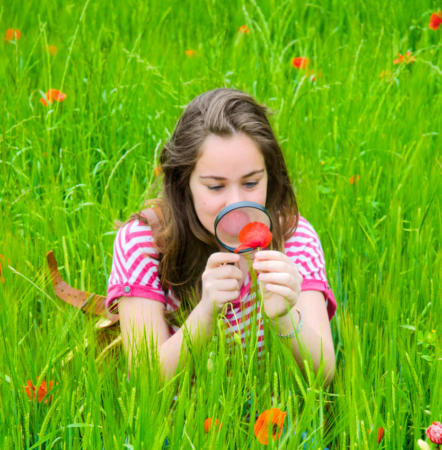
Sit spots are a fantastic way to develop key naturalist skills at your own pace. For example, you could do any of the following during a sit spot:
- Practice using binoculars on stationary objects
- Examine something close by with a magnifying glass
- Remember field marks on birds
- Examine tracks and other wildlife sign
- Sketch something in your naturalist notebook
- Come up with intriguing questions about what you’re seeing
- Engage different senses like smell, hearing, and touch
By giving yourself alone time in a natural setting, you can hone your skills while building your curiosity. These are great assets to naturalists of all levels!
Boosting your mental and emotional well-being

Finally, sit spots are a fantastic way to cultivate soft fascination, a mental state that scientists link with:
- Increased cognitive performance, creativity, and problem-solving skills
- Heightened mood
- Feelings of calm and contentment
- A calm, concentrated mental state
Since peace of mind and a break from distractions can be hard to find, sit spots make for an excellent pick-me-up. I often feel hopeful, secure, and focused after sitting for a while and being mindful of my surroundings. This process can be very therapeutic for your brain, as well as making your internal narrative more positive.
As with stress-reduction benefits, the more time you spend outdoors, and the more mindful that time, the better the results. Some past research suggests that 90 minutes or so a week is a great starting goal.
Thanks for reading about sit spots!
Do you have a favorite location for sit spots? What about particular habits or practices that make it a better experience? Share with us in the comments! As always, if you have additional topics you’d like covered in Outdoor Tips, reach out to me with the Contact Page!
If you’d like to learn more, be sure to check out the Nature Guys Podcast episode on sit spots. This one actually inspired me to try this fantastic naturalist practice for the first time four years ago in Kalispell, Montana.

